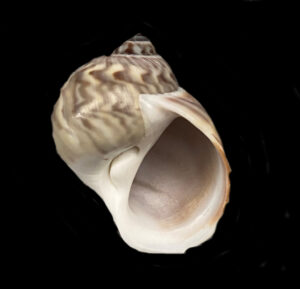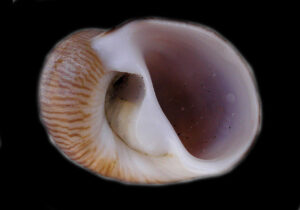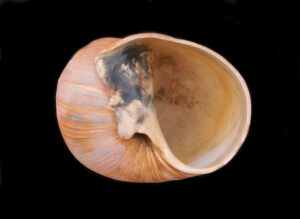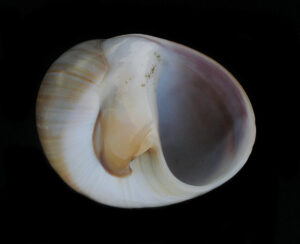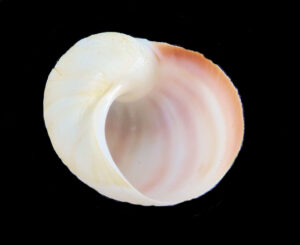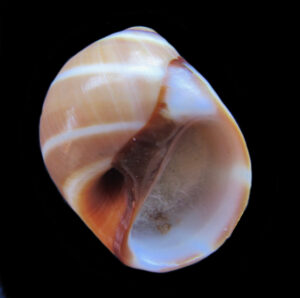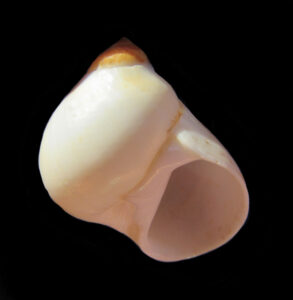Moon Snails of the Naticidae Family have globular to disk shaped shells that are found from the intertidal zone to depths up to 300 m (1,000 feet). The shells can be thin or thick and range from very small to large in size. They have large body whorls, very short spires and the aperture is semi-circular like a half-moon. The exterior of the shells is smooth and somewhat polished; the interior is porcelaneous. The operculum can be calcareous, or horn-like, in substance. They lack a periostracum. The mantle of Moon Shells is large and able to cover the shell, keeping it polished. In many species, the animal is too large to fit completely into the shell, until they expel a large amount of water. The mantle is used in the construction of the egg collar, a wide ribbon of sand and mucous that forms a broken loop. The egg capsules are deposited on the inside surface of the loop. Then another layer of sand and mucous is placed over the eggs, sealing them inside. Once the eggs develop into larvae, they break out of the collar. The collar stays flexible, like thin plastic throughout the process.
A representative sample of a Moon Shell Egg Case has been photographed by Ron Woheau, Zihuatanejo in January 2019 and is presented below. His brother Juanito also reports seeing similar Egg Cases in the Yal Ku area, Quintana Roo, of the Yucatán Peninsula.
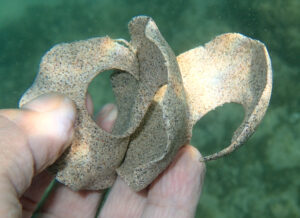
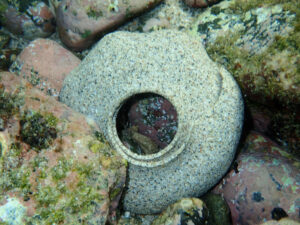
Moon Snails reside just under the surface buried in mud or sand bottoms. They are highly predatory plowing through the sand in search of bivalves or other snails. Once located the victim is enclosed in their foot, the radula is used to drill a round beveled hole into the other shell, a chelating compound to weaken the other shell is released to facilitate drilling. The process kills the prey which is then consumed by the Moon Snails. In return Moon Snails are preyed upon by shore birds, crabs, fish, mollusks and sea stars.
Moon Snails are found worldwide, in tropical to polar seas. There are over four hundred global species of Moon Snails of which fourteen are found within the coastal waters of the Baja.
